I reckon I must have some Inca blood in my family. Or maybe I just love spuds a lot, and so here I am again, growing spuds at home, this time in a proper 'tatey bag' from Diggers Seeds. I ordered mine a while ago, and in mild old inner-western Sydney where there's never any danger of frosts damaging the baby plants, so I figured this warm patch of early-spring style weather we're enjoying now is a good time to get my seed potatoes planted in their bag. But first of all, we need motivation, and so here's some of the last crop of King Edward potatoes we grew here at Jamie and Pam's Garden Amateur-land.
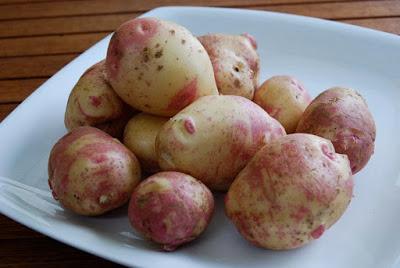
Blushed pink, King Edward potatoes are fine all-rounder
spuds, great for chips, roasting or baking in their jackets, and
its fluffy texture produces a truly wonderful mash.
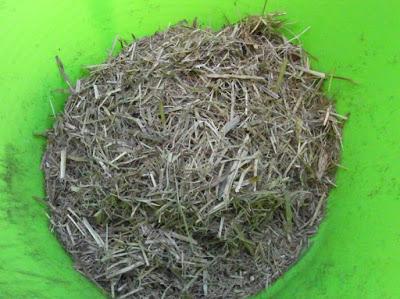
Some kind of straw is very handy, especially to form the
base on which your seed potatoes will sit inside the bag.
This is ordinary sugar cane mulch, which worked fine last
time, and which is plentiful and cheap here.
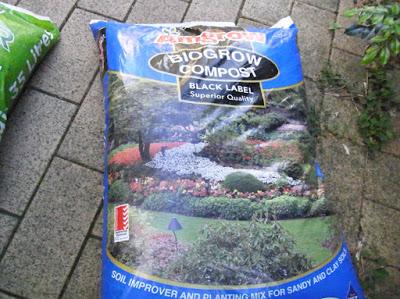
Use home-made compost by all means, but I am giving my
other Tatey bag and half my seed potatoes to a friend, and so
she is going to use this compost to grow her spuds.

Yes, you can use ordinary potting mix, too. But we didn't.
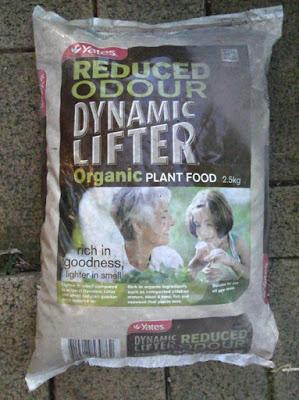
Compost itself is a fabulous gentle fertiliser,
so down the bottom of the bag, where the
roots will go searching for food, I will be adding
a handful of chicken poo. This time I am
using the "reduced odour" version of Dynamic
Lifter, which somewhat spoils the fun of the
whole exercise, but my friend's eight-year-old
daughter thought the reduced odour chicken
poo was pretty disgusting, so it's certainly
not odour free.
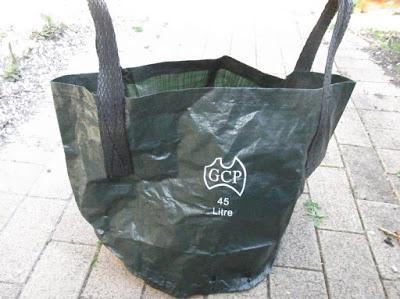
This is the 'Tatey bag' Diggers provides. It measures
(roughly) 40cm tall, wide and high, and the handles are handy.
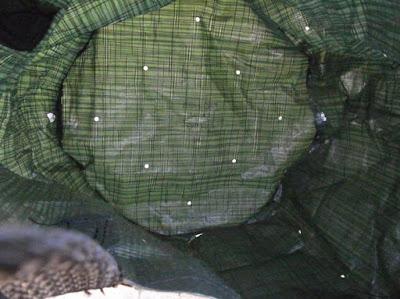
The tatey bags come with plenty of holes both in the bottom
and the sides, so water can drain away. You can of course
grow potatoes in a pot, but just make sure it has plenty of
drainage holes in the bottom (not just one, as some poorer
quality big ceramic pots sometimes have). The big plastic
pots usually have plentiful drainage holes.
OK, so they're your ingredients to form the bottom layer of the pot: straw, compost and chicken poo, plus a bag with lots of holes in the bottom.
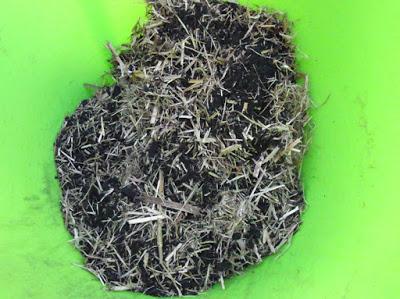
For the bottom layers, I mix together several big handfuls
of straw with the same quantity of compost.

Then I fill the bag about 10cm deep with my straw and
compost mix. Then I sprinkle a handful of chicken poo over
the top, then cover that chicken poo with another 10cm of
straw and compost. This is an important point: don't let your
seed potatoes come into direct contact with the fertiliser.
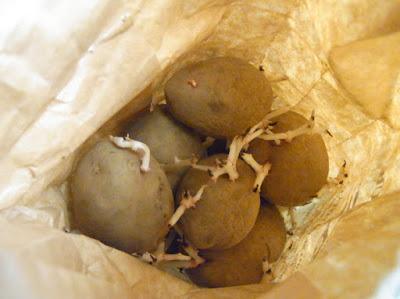
Here's the seed potatoes in their bag. They've already sprouted.
This is a good thing, not a bad thing! They'll grow quickly
now they are nestled into the rich planting soil.
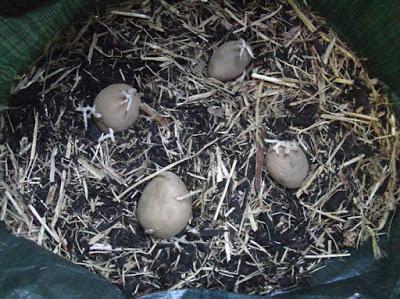
Place the seed potatoes with the sprouts facing upwards.
I've put four seed potatoes into the bag, and that's about the
maximum to plant in this kind of space.
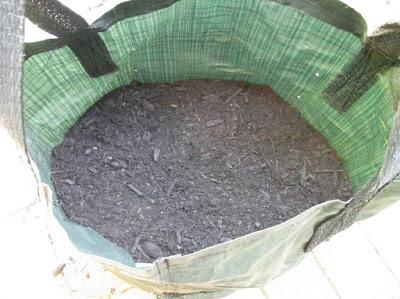
Finally, I then covered the seed potatoes with more compost.
If you have mixed up too much compost and straw, it is
totally OK to cover the seed potatoes with more compost
and straw, of course. In fact, some potato growers like to
grow their spuds mostly in straw.
The best place to put your potato bag is a sunny spot, and that means one which gets at least six hours a day of sunshine, or the closest you can get to six hours.
As for when the first green shoots appear, it could take a couple of weeks or more. Just keep an eye on what happens.
I'm going to update my "spuds in a bag" blog when there is news to report, and I expect about a month from now there'll be a bit more work to do to keep things rolling along.
If you decide to have a go yourself, you can buy everything you need from Diggers Seeds (diggers.com.au) but your local garden center or major hardware chain garden center (eg, Bunnings, Mitre 10 etc) also stock "seed potatoes", so you could buy a pack of them and try your hand at potato growing in a large pot, or of course in the ground itself.
Whatever you decide, good luck.
